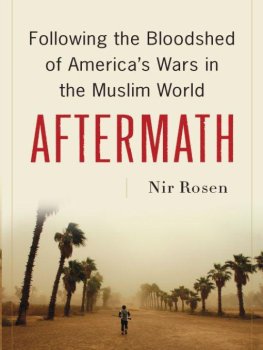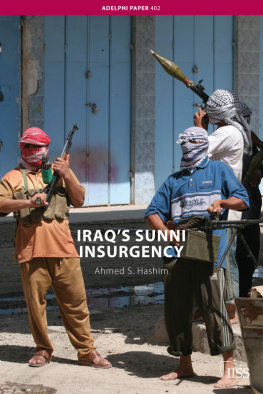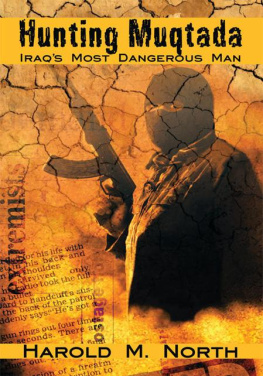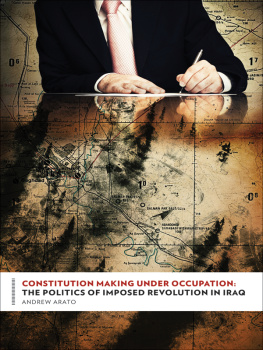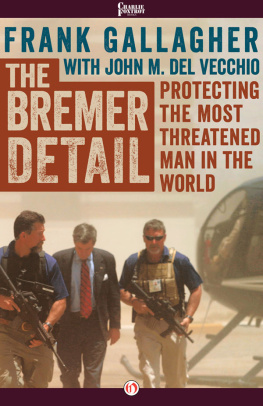Battle for the City
of the Dead
In the Shadow of the Golden Dome,
Najaf, August 2004
Dick Camp

To the American servicemen and women who make
the ultimate sacrifice for their country:
Till the last landings made
And we stand unafraid
On a shore that no mortal has seen.
Till the last bugle call
Sounds taps for us all
Its Semper Fidelis soldier, sailor, and Marine.
And to my wife, Suzi Pool-Camp... great love!
First published in 2011 by Zenith Press, an imprint of MBI Publishing Company,
400 First Avenue North, Suite 300, Minneapolis, MN 55401 USA
Copyright 2011 by Dick Camp
All rights reserved. With the exception of quoting brief passages for the purposes of review, no part of this publication may be reproduced without prior written permission from the Publisher. The information in this book is true and complete to the best of our knowledge.
Zenith Press titles are also available at discounts in bulk quantity for industrial or sales-promotional use. For details write to Special Sales Manager at MBI Publishing Company, 400 First Avenue North, Suite 300, Minneapolis, MN 55401 USA.
To find out more about our books, join us online at www.zenithpress.com.
Digital edition: 978-1-61060-257-0
SoftCover edition: 978-0-76034-006-6
Library of Congress Cataloging-in-Publication Data
Camp, Richard D.
Battle for the city of the dead : in the shadow of the Golden Dome, Najaf, August 2004 / Dick Camp.
p. cm.
Includes bibliographical references and index.
ISBN 978-0-7603-4006-6 (hb w/ jkt)
1. Najaf, Battle of, Najaf, Iraq, 2004. 2. Iraq War, 2003---Campaigns--Iraq--Najaf. 3. United States. Marine Corps--History--Iraq War, 2003-4. United States. Army--History--Iraq War, 2003- I. Title.
DS79.764.N35C36 2011
956.7044342--dc22
2010045938
Maps by: Patricia Isaacs, based on official 11th MEU operational slides unless otherwise noted.
Design Manager: Brenda Canales
Designed by: Helena Shimizu
Jacket design by: Andrew Brozyna
All photographs are from the authors collection unless noted otherwise.
On the cover:
Main: The Wadi al-Salaam cemetery. Defenseimagery.mil DF-SD-06-03498 Background: A Marine firing an M-60 machine gun. Maj. Michael S. Wilbur, USMC
On the back cover:
A Cobra gunship fires a missile into the Wadi al-Salaam cemetery. Lt. Col. Glen G. Butler, USMC
Printed in China
Contents
PROLOGUE
Wadi al-Salaam Cemetery
August 5, 2004
MARINE 1ST LT. MICHAEL Borneos Combined Anti-Armor Team Alpha (CAAT-Alpha) was deployed to the north and east side of Revolutionary Circle, the main intersection in the city of An-Najaf, for all of about three minutes, Borneo recalled, when there was an airburst right in the middle of the circle, about two feet from my vehicle. Shrapnel from the burst peppered the street, striking Borneos up-armored Humvee and the light armored vehicle (LAV) alongside. The Marines went to high alert, scanning the buildings and alleyways for danger.
Suddenly we started receiving machine-gun fire from the cemetery, Borneo said. When I say a cemetery, its a maze of tombs and above-ground mausoleums, kind of like New Orleansbut its huge. It goes on for kilometers, with tunnels, weapons caches, and command and control centers. The Jaish al-Mahdi, or Mahdi Militia (also known as the Mahdi Army), felt safe there because it was in an exclusion zone, where the Marines did not go because of the cemeterys religious significance to Shiites.
Borneo moved two of his machine-gun vehicles to a position along the wall of the cemetery. They started firing on the enemy with their .50-caliber machine guns. A section of LAVs pulled up and joined in with their 25mm cannon. It looked like a hornets nest, Borneo exclaimed. You could see guys running all over shooting at us. I dont know whether they were trying to flank us, feel us out, or just had an itchy trigger finger and decided to shoot at us... but they shot first, and we responded.

First Lieutenant Michael J. Borneo, an aggressive combat veteran, led the Combined Anti-Armor Team Alpha (CAAT-Alpha) in the first encounter with Muqtada al-Sadrs Mahdi Militia. USMC History Division
Borneo quickly realized that Revolutionary Circle was a registered target. We started taking a lot of mortar roundsone short, one long, then right on us, with the gunners firing for effectso I quickly backed my vehicles out of the circle. The mortars stopped, but his team continued to take fire from small arms and rocket-propelled grenades (RPG), which for the most part were ineffective.
Within minutes, Marine AH-1W SuperCobras and UH-1N Huey gunships from Marine Medium Helicopter Squadron 166 (HMM-166) reported on station to support the embattled Marines. Captain Stephen H. Mount was the designated section leader for a flight of two aircrafta UH-1N Huey and an AH-1W Cobrathat was tasked to provide support for Battalion Landing Team (BLT) 1/4 during an attack on the cemetery:
We were flying in a holding area outside the city when we received word that the 1/4 quick reaction force [QRF] was receiving enemy fire from multiple sources in the cemetery. We were cleared by their forward air controller [FAC], call sign Wombat [Capt. Carl Lowe], to provide support. Our instructions were that anyone west of the road in the cemetery was fair game. We made several attack runs with our crew-served weapons at people that were shooting from the cemetery. In one attack against a car park with an overhang, the whole building exploded with twinkles [automatic weapons fire], including an airburst from an RPG that was set to detonate in the air. We engaged with our crew-served weapons and then Dale Behm [pilot-in-command of the AH-1W] put two rockets into the building in a beautiful display of marksmanship.
The Huey, call sign Rocky 05, was directed by Wombat to attack a suspected mortar position. The aircraft began its attack, but, as Borneo recalled, It happened about 900 meters away from us. As soon as it flew overhead, the enemy immediately started shooting at it with tracers. Mount remembered that
we came in on a south-to-northwest attack at about 90 to 100 knots, but we couldnt see [the mortar]. As we came around to the right, we got hit. It felt like I got whacked in the head by a bat. There was a loud ringing in my ears, and I lost vision except for light and dark. I involuntarily jerked back on the stick. The nose of the aircraft climbed until it was nearly straight up. Drew [Capt. Andrew M. Turner, copilot] instantly took control, leveled the aircraft, and got some forward momentum just as we slammed into the ground. We hit on the edge of the street, bounced a couple of times, hit a lamppost, and skidded to a stop in a courtyard. It happened so fast, we didnt have time to shut down the engines.
I was in a lot of pain, but I managed to unbuckle the seat and shoulder harness and step out on what was left of the skid. I yanked out my pistol, but it dawned on me that I didnt have a round in the chamber. In the process of trying to cock itat the time, I had one hand on my head and eyethe magazine fell out. Before I could do anything else, the crew chief [Staff Sgt. Patrick O. Burgess] grabbed me by my flak vest and dragged me behind a wall. I could hear the crack of small-arms fire as the bad guys fired at us. Staff Sergeant Burgess took my pistol, replaced the magazine, and chambered a round. At the time, I was choking on bloodmy head was bleeding badlyand I was worried that I would bleed out. I had a throbbing headache, and I still didnt know what happened. Staff Sergeant Burgess looked me over and made me promise not to lie down. I think he was afraid Id go into shock and die.


